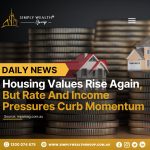Maximizing Returns with Sustainable Property Investments
Sustainable property investing is gaining traction. It’s a trend that’s reshaping the Australian real estate landscape, particularly in Australia.
But what exactly is it?
In essence, sustainable property investing involves purchasing and managing properties that are environmentally friendly and socially responsible. It’s about aligning your investment strategy with environmental, social, and governance (ESG) criteria.
Why does it matter?
Sustainable properties can offer higher returns and lower operating costs. They also contribute to property value appreciation. Plus, they align with the growing demand for sustainable living spaces.
This guide will delve into the ins and outs of sustainable property investing. It will provide practical tips to help you maximize your returns while contributing to a greener and more sustainable future.
Understanding Sustainable Property Investing
Sustainable property investing is more than a buzzword. It’s a strategic approach to real estate investment that emphasizes sustainability and responsibility.
This investment model focuses on properties that minimize environmental impact. It also incorporates socially responsible practices and adheres to governance standards.
Key features of sustainable property investing include:
- Energy efficiency and renewable energy sources
- Water conservation and sustainable building materials
- Waste reduction and recycling efforts
- Social responsibility and ethical management
The trend is gaining momentum worldwide, with Australia at the forefront. This is largely due to favorable regulations and increasing eco-awareness. Understanding this concept is crucial for anyone looking to make informed investment decisions. It can lead to both financial rewards and positive societal impact.
What is Sustainable Property Investing?
Sustainable property investing refers to buying, developing, and managing properties while prioritizing environmental and social factors. This includes investing in eco-friendly buildings designed to minimize energy consumption and waste.
These properties often feature state-of-the-art technologies that enhance efficiency. Examples include smart thermostats, solar panels, and water recycling systems. The goal is to create properties that offer economic benefits without compromising the planet’s future.

Why Sustainable Property Investing Matters
Sustainable property investing is essential for long-term value creation. Sustainable real estate meets the rising demand for green living spaces, appealing to eco-conscious tenants and buyers.
Moreover, governments worldwide are pushing for greener building codes and incentives. This alignment with policy can further boost property values and yields. By engaging in sustainable property investing, investors contribute to a healthier planet and society. It also positions them ahead of regulatory changes and market shifts.
The Financial Benefits of Sustainable Property Investments
Investing in sustainable properties can significantly enhance financial outcomes. These properties often offer several economic advantages over traditional investments.
One of the main benefits is the reduction in operating costs. Sustainable properties tend to consume less energy and water, reducing utility expenses. Additionally, they often require less maintenance due to durable and efficient materials.
Another advantage is resilience against market fluctuations. Sustainable properties often attract stable tenants, reducing vacancy rates. They’re also less prone to regulatory risks as they meet environmental standards.
Moreover, there’s a growing pool of impact investors seeking sustainable options. This can increase demand and drive up property prices. By focusing on sustainable investments, investors can enjoy the following benefits:
- Lower utility and maintenance costs
- Reduced regulatory risks
- Attraction of impact-focused investors
- Stable rental income and lower vacancy rates
Higher Returns and Lower Operating Costs
Sustainable properties frequently yield higher financial returns. This is due to their appeal to tenants seeking eco-friendly living spaces. As more people prioritize sustainability, these properties can command premium rental rates.
Moreover, the operating costs of such properties are often lower. Energy-efficient systems, renewable energy sources, and water-saving fixtures contribute to reduced expenses. This is advantageous for investors, allowing for increased net income.
Property Value Appreciation
Sustainable properties can experience significant appreciation in value. As demand for green living grows, properties that meet sustainability criteria become more valuable. Buyers are often willing to pay a premium for eco-friendly features.
Furthermore, properties with sustainable certifications are often seen as more prestigious. This perception can boost market value, resulting in higher sale prices. By investing in sustainability, investors position themselves for long-term capital appreciation.
Sustainable Property Investment in Australia: A Growing Trend
Sustainable property investment is rapidly gaining traction in Australia. As environmental consciousness increases, more investors are looking at green real estate. This shift is driven by both market demand and government support.
Australia’s unique environmental challenges underscore the need for sustainability in property. Investors are responding by prioritizing eco-friendly solutions. This trend is transforming the real estate landscape, making sustainable investments more mainstream.
As investors recognize the investment property financing and ethical benefits, sustainable properties are becoming more desirable. The trend is pushing developers to integrate sustainable practices into new projects. This evolution reflects the global move towards environmentally responsible living.
Government Incentives and Regulations
The Australian government plays a vital role in promoting sustainable property investments. Incentives such as tax credits and grants encourage developers to focus on green building practices. These financial benefits make it easier for investors to commit to sustainable properties.
Moreover, regulations set standards that guide sustainable development. Policies that enforce energy efficiency and emissions reductions are crucial. They ensure sustainable developments align with national environmental goals. By providing clear guidelines, the government helps investors adopt sustainable strategies with confidence.
Case Studies: Success Stories Down Under
Several Australian projects illustrate the success of sustainable property investments. One example is the Barangaroo development in Sydney. This precinct aims for zero net emissions and sustainable water use, showcasing advanced eco-friendly practices. It has attracted tenants focused on sustainable and ethical business practices.
Another success story is Green Square, a community with a focus on sustainable urban living. With green spaces and energy-efficient buildings, it highlights how sustainable design enhances livability.
Melbourne’s Docklands is yet another example. The area incorporates solar power, water recycling, and efficient public transport. These projects demonstrate the viability and appeal of sustainable properties in Australia. They set benchmarks for future developments, encouraging broader adoption of sustainable practices.
Key Strategies for Sustainable Property Investing
To excel in sustainable property investing, it’s essential to follow strategic guidelines. Investors must consider a variety of factors to ensure long-term returns. These strategies will help in making informed decisions and maximizing profits.
For First Home Buyers, understanding the market demand for sustainable features is crucial. This knowledge will guide your investments towards properties that align with current trends. It’s important to stay updated on what tenants and buyers are looking for in sustainable living spaces.
Secondly, location plays a significant role in property sustainability. Investing in neighborhoods known for eco-friendly practices enhances property appeal and value. These areas often feature efficient public transport, green spaces, and community amenities.
Finally, maintaining a diversified portfolio is vital. A mix of properties, including both new sustainable builds and retrofitted older properties, balances risk and opportunity. Diversification helps investors navigate market fluctuations and emerging trends effectively.
Essential strategies include:
- Market demand analysis
- Emphasis on location
- Portfolio diversification
- Embracing innovation
- Monitoring regulatory changes
By incorporating these strategies, investors can confidently navigate the sustainable real estate landscape.
Assessing Property Sustainability
Evaluating the sustainability of a property is a critical step before investing. Look for green certifications like LEED or Green Star to verify eco-friendly credentials. These certifications assure that a property meets specific environmental standards.
In addition to certifications, consider the property’s energy efficiency and resource conservation features. Examine the use of renewable energy sources, water-saving installations, and waste management systems. Effective assessment of these factors helps in identifying truly sustainable investments and avoiding greenwashing.
Retrofitting and Technology Innovations
Retrofitting existing properties with sustainable technologies can significantly enhance their value. Energy-efficient appliances, smart home systems, and improved insulation are impactful upgrades. These improvements not only reduce operating costs but also boost property attractiveness.
Incorporating technology innovations, such as smart thermostats and solar panels, aligns properties with modern sustainability trends. These additions provide competitive advantages in the market. Retrofitting existing structures with these technologies extends their lifespan and ensures ongoing relevance in a sustainable future.
Risks and Mitigation in Sustainable Property Investing
Sustainable property investing offers immense benefits, yet it’s not without risks. Potential pitfalls include overestimating the market value of green features or falling for superficial eco-labels. Understanding these risks is crucial for investors to protect their investments.
One of the primary risks is greenwashing, where properties are falsely marketed as sustainable. This can lead to higher initial costs without real returns. Conducting thorough due diligence can help investors avoid such traps.
Additionally, fluctuating regulations can pose challenges. Eco-friendly standards evolve, and what qualifies as sustainable today might change. Staying informed about policy updates helps in navigating these regulatory shifts.
To mitigate risks, investors can diversify their property portfolio. Including both conventional and sustainable properties can cushion any unexpected downturns in specific segments of the market. This approach balances risk and encourages stable growth.
Identifying Genuine Sustainable Investments
Identifying authentic sustainable investments involves careful examination. It’s vital to verify the property’s green certifications and scrutinize sustainability claims. Certificates like LEED or Green Star provide credible assurance of true environmental commitment.
Investors should also assess the tangible benefits of a property’s eco-friendly features. Look for measurable improvements in energy efficiency or water conservation. Genuine sustainable investments have clear benefits beyond marketing, aiding long-term financial returns.
The Future Outlook and Emerging Trends
The future of sustainable property investing is promising. Growing environmental awareness is driving consumer demand for eco-friendly homes. This trend is expected to continue as more buyers prioritize environmental impact.
Emerging technologies, such as AI in energy management and innovative building materials, are shaping the future landscape. These advancements promise enhanced efficiency and reduced costs. Keeping abreast of these trends ensures investors stay ahead in the sustainable property market, reaping benefits as the industry evolves.
Marketing and Managing Sustainable Properties
Effective marketing and management are pivotal for maximizing returns on sustainable properties. Highlighting green features in advertisements can attract an eco-conscious audience. Use imagery and content that emphasizes sustainability to appeal to potential tenants and buyers.
Managing sustainable properties requires ongoing effort to ensure they remain eco-friendly. Regular maintenance of energy-efficient appliances and systems ensures optimal performance. Sustaining these features not only enhances property value but also retains tenant satisfaction.
Emphasizing a property’s contribution to the environment can create a unique selling proposition. Showcase how green buildings reduce carbon footprints and promote healthier living spaces. This approach can differentiate sustainable properties in a competitive market.
Keeping up with green certifications and improvements can boost marketability. Properties that continuously integrate new sustainable practices often stand out to eco-aware consumers. This ongoing commitment to sustainability reinforces the property’s value proposition.
Attracting Eco-Conscious Tenants and Buyers
Eco-conscious consumers look for properties that reflect their values. To attract these individuals, emphasize the tangible benefits of sustainable living. Highlight features like solar panels, energy-efficient systems, and sustainable materials.
Transparent communication about a property’s impact on reducing utility costs and improving health can appeal to this demographic. Marketing content should educate potential occupants about the practical benefits of living sustainably, enhancing demand from environmentally aware tenants and buyers.
The Role of Property Managers
Property managers play a crucial role in the success of sustainable properties. They are responsible for maintaining green features and ensuring efficiency. Their expertise ensures the property’s sustainable aspects are consistently optimized, leading to lower operational costs.
Effective property managers are also educators. They inform tenants about sustainable practices and how to maintain eco-friendly lifestyles within the property. By fostering a community of eco-conscious tenants, managers can enhance the property’s reputation and appeal.
Conclusion: The Role of Sustainable Property Investing in Society
Sustainable property investing is more than a financial & property investment strategies; it is a commitment to the future. By investing sustainably, individuals can align their financial goals with environmental and social values. This approach contributes significantly to reducing carbon footprints and promoting healthier communities.
Moreover, sustainable investments support broader societal objectives, like combating climate change. They also foster economic growth by creating jobs in the green building and renewable energy sectors. As more investors embrace this mindset, the ripple effect can transform communities and drive innovation.
Incorporating sustainability into real estate investments thus becomes a path toward long-term benefits. It ensures not only robust returns but also lasting positive impacts on the planet and society. Adopting sustainable practices today paves the way for a brighter, more equitable future. Also visit Simply Invest Group.








